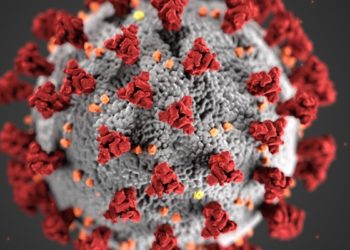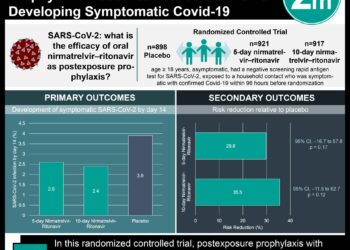Radiological findings of COVID-19 pneumonia in Wuhan, China
1. COVID-19 pneumonia findings on chest computed tomography (CT) are present even in asymptomatic patients.
2. The pattern of findings appear to progress from focal unilateral to diffuse bilateral ground-glass opacities with or without consolidations within 1 to 3 weeks of infection.
Evidence Rating: 3 (Average)
Although chest CT imaging is one of the most commonly used imaging modalities to diagnose and prognosticate COVID-19 pneumonia, the imaging features and evolution overtime have not been well characterized. In this retrospective cohort study, the imaging and clinical data of 81 patients was used as a means to correlate imaging findings with the clinical course of COVID-19 pneumonia. Patients were categorized as either group 1 (subclinical, scans done before symptom onset), 2 (scans <1 week after symptom onset), 3 (scans done between 1 to 2 weeks of onset), and 4 (>2 weeks to 3 weeks). The predominant manifestation of the disease appeared to be bilateral, subpleural, ground-glass opacities with air bronchograms with a slight predominance in the right lower lobe. For the subclinical group, the predominant radiological finding was ground glass opacities (93%), presenting with unilateral (60%) and multifocal (53%) lesions. The most common finding in the second group was an evolution to bilateral (90%), diffuse (52%) ground glass opacities (81%). Pleural effusions (5%) and lymphadenopathy (14%) were also detected in this group. Prevalence of ground glass opacities decreased in the 3rd (57%) and 4th group (33%) in favour of consolidation (40%, 53%, respectively). Some scans during progression from the second to third week also demonstrated interstitial changes associated with bronchiectasis and/or interlobular or septal thickening, suggesting the development of fibrosis. Researchers suggested serial imaging with CT as a useful tool in monitoring disease progression or regression, as radiographic improvement was well correlated with clinical improvement and discharge. Likewise, radiographic deterioration despite therapy was associated with poor prognoses and death. In accordance with prior and emerging literature, this patient population tended to involve patients of older age and underlying comorbidities. Although the sample size of this study was small, it provides valuable insight into the radiographic progression of COVID-19 pneumonia on CT, and may assist in further diagnosis, prognostication, and monitoring in the clinical setting.
Click to read the study in Lancet Infectious Diseases
Image: PD
©2020 2 Minute Medicine, Inc. All rights reserved. No works may be reproduced without expressed written consent from 2 Minute Medicine, Inc. Inquire about licensing here. No article should be construed as medical advice and is not intended as such by the authors or by 2 Minute Medicine, Inc.







